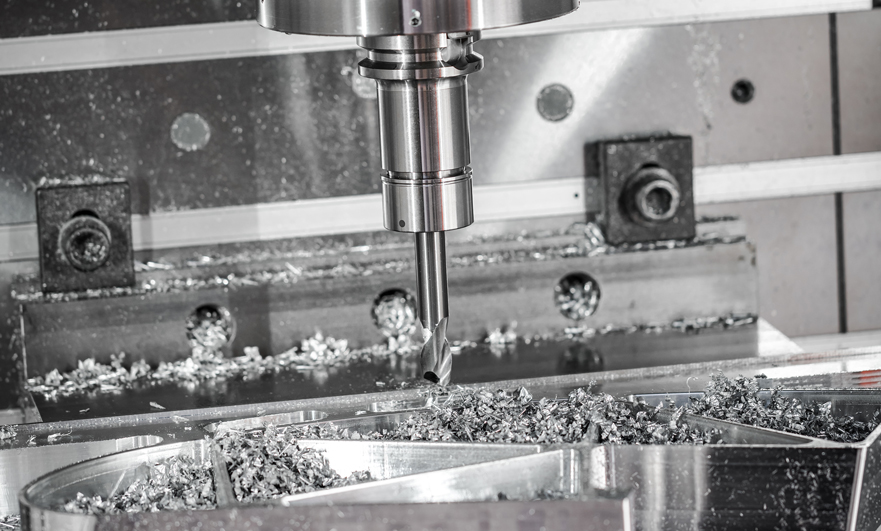15 years one-stop China custom CNC machining parts factory

Hey there I’m VMT Sam!
With 25 years of CNC machining experience we are committed to helping clients overcome 10000 complex part-processing challenges all to contribute to a better life through intelligent manufacturing. Contact us now
 182 |
Published by VMT at Jan 21 2022
182 |
Published by VMT at Jan 21 2022
The deep hole boring process can be divided into two categories, namely the push boring method and the pull boring method. Now the characteristics of these two processes are analyzed and compared as follows, for your reference. First, the push boring method and the push boring method in the boring process, The boring bar always works under axial pressure. Due to the different chip removal methods, it can be divided into two types: forward chip removal and push boring method and backward chip removal method.
Forward chip removal and boring method Forward chip removal and boring method, after the cutting coolant is delivered by the oil pump, one is fed from the rear end of the boring bar, and the other is fed from the oil feeder (some call it the pressure head). Granted.
The former passes through the inner hole of the boring bar. The latter flows to the cutting area through the annular gap between the outer circle of the boring bar and the machined hole of the CNC parts, and then discharges the chips to the chip bucket towards the head of the bed, and finally collects the chips. vehicle.
The two oil feeding positions of this boring method have very different effects on the life of the tool, the support pad and the smoothness of the CNC parts. In the former one, due to the rotation of the CNC parts, the oil from the inner hole of the boring bar passes through the boring bar. When the oil outlet hole on the head shoots into the cutting area, it is easy to form adhesion to the inner hole.
The so-called deep hole generally refers to the hole with the ratio of hole depth to diameter > 5 to 10, or even to 100 or more. Deep hole boring is the most common processing method to obtain deep holes with certain accuracy. Usually, the boring accuracy of deep hole boring can reach IT7~IT8, and the surface roughness value Ra=3.2~0.8µm.

The conventional push-boring method is the most widely used deep-hole boring method at present, but because of the push-boring structure, the boring bar is always in an axially compressed state, especially for CNC machining of large deep-diameter holes, the boring bar will not work. The phenomenon of pressure rod instability is avoided, resulting in uneven wear of the guide part of the boring head, resulting in large deflection and straightness error of the CNC machining hole axis. Accuracy, and it is impossible to stably control the axis deflection of the boring method CNC machining within 0.15mm (per meter depth).
CNC parts (usually hot-drawn, cold-drawn or centrifugal casting pipe stock) are pre-processed before clamping, and CNC machining is required for several center frame positioning surfaces, front 15° cone surfaces and snap ring grooves with a certain degree of coaxiality The 15° conical surface is matched with the inner conical surface at the end of the chuck body, which ensures that it can be pressed by the semicircular snap ring + pressure plate structure shown in the figure, positioning the CNC parts, sealing and transmitting the cutting torque.
This structure adopts the oil feeding method of the head spindle, and the cutting fluid carries the chips, and is discharged to the end of the CNC part through the gap between the boring bar and the inner hole of the blank. The inner hole clearance of the blank is s ≥ 2t (the depth of the knife), and the feed rate is appropriately increased during CNC machining to ensure that the chips are short coiled chips.
The coaxiality requirements of each machining hole are realized under the rotating state of the CNC parts. For CNC parts with multi-step holes, in order to ensure the tolerance requirements, in the conventional CNC machining process, the method used is to CNC process the φ510+0.04mm hole first, and use this hole as the reference to turn the outer circle of the workpiece (to ensure that the final measured wall thickness is consistent).
The reference A is transferred to the outer surface of the workpiece, and the CNC parts are clamped by the outer circle to machine other holes. The processing of other holes also needs to be guided by the φ510+0.04mm hole. First, CNC machine the guide hole to ensure the coaxial requirements everywhere. The difficulty of machining CNC parts increases sharply with the increase of the number of steps.
Practice has proved that the pulling and boring method is a deep hole machining method with good stability and high CNC machining accuracy. The above structural diagrams basically cover the application of the pulling boring method, which can be applied to the machining of specific deep-hole CNC parts to ensure the final CNC machining accuracy requirements.
Ready To Start Your Next Project?
Get Instant Quote

Request a Free Quote
Send us a message if you have any questions or request a quote. We will get back to you ASAP!